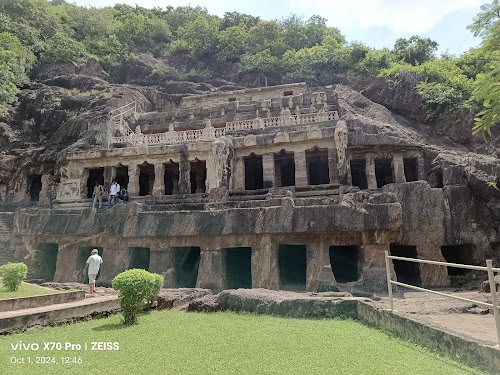
Undavalli Cave Temple
Vijayawada, India
- Admire the Vishnu reclining statue
- Capture scenic views of the Krishna River
- Discover ancient Hindu and Buddhist sculptures
- Explore the multi-story cave complex
- Learn about the history of the caves
Known for:
Description:
The Undavalli Caves, a monolithic rock-cut example of Indian rock-cut architecture, are located in Undavalli, Guntur district, Andhra Pradesh. These caves are believed to be carved out of solid sandstone hills during the 4th-5th centuries AD. Primarily associated with the Buddhist faith, the caves later came under Hindu influence. The most prominent feature is the massive reclining statue of Lord Vishnu, sculpted from a single granite block. The multi-story cave complex features numerous shrines and sculptures dedicated to various Hindu deities, offering a glimpse into the region's rich artistic and religious heritage. Visitors can explore the intricate carvings, admire the architectural marvel, and enjoy panoramic views of the surrounding countryside.
History:
The Undavalli Caves are believed to have originated as Buddhist monasteries during the 4th-5th centuries AD, under the Vishnukundina dynasty. The initial caves likely housed Buddhist monks and served as a place for meditation and learning. Over time, as Hinduism gained prominence in the region, the caves were gradually converted into Hindu temples. The most significant transformation occurred during the 7th century AD when the massive reclining statue of Lord Vishnu was carved. The Pallava dynasty is also credited with contributing to the architectural and sculptural enhancements of the caves. The Undavalli Caves stand as a testament to the religious harmony and artistic evolution that characterized ancient India.